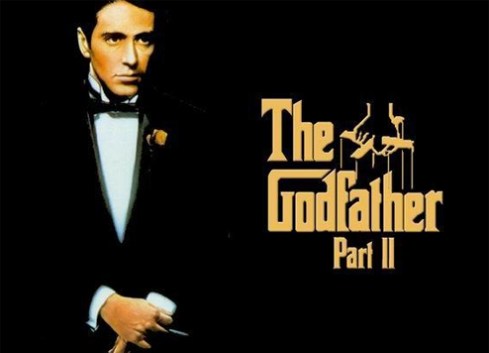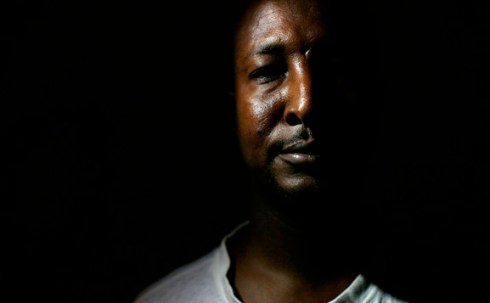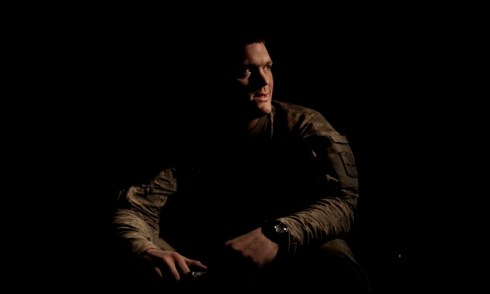You are currently browsing the tag archive for the ‘Pirates’ tag.

When Jehad Nga’s photographed Somali pirates it was at a time when frigates not people were perceived as the main victims of their contemporary skull-duggery. It was also before American military engagement and the associated global media entered the fray
The main reason I focussed on Nga’s work back in December was because his pirate-subjects were imprisoned. Nga’s work at the time was featured in Time Magazine and The New York Times and I’d be lying if I wasn’t part of the consuming public that took more notice of the pictures than the politics.


Since the close of 2008, activities in the Gulf of Aden have ramped up. So has Nga’s career; in photojournalist terms he unleashed another blockbuster this week with his portraits of US Marines in the New York Times. I’ll confess – I’m a sucker; I think Nga’s Chiaroscuro portraits are irresistible. My only problem is that the same aesthetic has been put in place by Nga and I am left confused.



Nga described the jails in which Somali pirates were kept as dark and dank, so his visual language makes sense when working in that context. Has he made multiple photo essays of high contrast, using vibrant colour-schemes and dark negative space. Nga, has to my mind, forged himself a visual brand.
What is the end result of this? Is Nga just playing a longview game, in which his brand sustains longer than the stories? Is Nga just giving the public the cinematic frames it has lapped up previously? Is it problematic that he gives the same treatment to the ‘vilified pirates’ and ‘patriotic heroes’ we’ve seen in the newspapers this week? Are my queries unfair. After all one man’s terrorist is another’s freedom fighter. One man’s criminal is another’s political prisoner. Is it even Nga’s place to distinguish, or use visual devices to shape viewers’ thinking? We’d do well to remember Brando and Pacino played great villains, but they were villains we loved to hate.
What do you think? Do you contemplate the character of a subject differently when it is struck by bright pockets of light if it is an American soldier or Somali pirate? How do you reconcile that?

All images, except the Godfather II and Apocalypse Now still (final image) ©Jehad Nga.
When intellectual withdrawal sets in, I stem the tide and sate the need at a handful of reliable dispensaries. It would seem that two weeks ago, three of my favourite cartophiles (not a word) jumped on the same bandwagon boat. The boldest at-sea-heist of the modern era had just taken place, and it seemed the misfortunes and misadventures on petrochemical distribution routes were top of everyone’s agenda. Spurred by a AP photo in the New York Times (below), the indubitable Brian Finoki focused on the inseparable threads of the pirate clique, theorising that without their vessel, the posse of pirates had only each other to stay afloat in the hard concrete prison yards of Mombasa.

Eight Somali pirates sat at the Kenya Ports Authority Port Police station in Mombasa, where they are being held after being handed over to the Kenyan authorities by the Royal Navy. The eight pirates were arrested, and three others killed, by sailors of HMS Cumberland, as they attempted to hijack a cargo ship off the Horn of Africa. The pirates will be charged in a Mombasa court. Credit: AP
BLDGBLOG was twisting its melon, highlighting improv google map action along with the official sounds coming out of the International Maritime Bureau and its Live Piracy Report. Meanwhile, InfraNet Lab could only conclude that piracy was the opportunist’s career of choice given the current absence of government in Somalia.
I need my own bent on this and so refer you to Jehad Nga‘s phenomenal Pirates Inc. Somalia photo essay depicting pirates under lock and key in Boosaaso Jail & Mandhera Prison, Somalia. Nga is no slouch – he has (largely self-funded) returned to Somalia repeatedly over the past three years. It is incredibly dangerous to work within Somalia. It is more dangerous, in some regards, than in Iraq or Afghanistan where journalists can rely on isolated cordoned-safe-green-military zones and when at large, can work embedded with Western forces. But Nga is no stranger to Iraq either; as foto8 reminds us, “Nga has worked widely in Iraq on assignment for the New York Times. His image of blindfolded Iraqi prisoners arrested by US forces was used as the main publicity shot for the Oscar-winning documentary, Taxi to the Dark Side“.

Pirates imprisoned in Boosaaso's main jail. Photo: Jehad Nga for The New York Times
I would like Nga’s images and words to represent themselves. Words: here’s an indepth interview, from September 2008, with Nga about the situation in Somalia. Images: I have accompanied Nga’s (dare I say it) Carravagioesque prints with his own website commentary about the project:
Nga: Looking over that Somaliland naval map I noticed that the Gulf of Aden (the narrow band of ocean that separates Somalia and Yemen) and the Somali cost line were littered with upward of 100 little skull and cross bone flags. Black flags to denote ships that were successfully taken by pirates and gray for ships that were attacked by pirates but managed to escape. Most of these flags are black.

(Clockwise from Top Left) Mohamed Mahamoud Mohamed; Abdi Rashid Ismael Abdullahi; Farah Ismael Eid; and Abdullahi Mahamoud Mohamed, are each serving 15 years for a piracy conviction. "Believe me, a lot of our money has gone straight into the government's pockets," Farah Ismael Eid said. His pirate team typically divvied up the loot this way: 20 percent for their bosses, 20 percent for future missions, 20 percent for the gunmen on the ship, and 20 percent for government officials. Photo: Jehad Nga for The New York Times
Housed in the Mandhera Prison in Somaliland are 719 inmates 5 of whom are serving 15 yrs sentences handed down to them for their involvement in Somalia’s thriving pirate industry.

Photo: Jehad Nga
The autonomous region of Somaliland is doing their part to combat the growing influx of pirates in the gulf and coastal areas. Utilizing the small fleet of gunboats and navy personnel, they patrol their waters and on occasion escorts’ ships coming in from Yemen. Somalia, in stark contrast to Somaliland, still suffers from the turmoil that has put the country on the map for many people for the last 17 yrs, when the country made a dramatic turn from relative stability to brutal civil war in 1991.

Prisoners. Photo: Jehad Nga
Pensive and quiet the 5 men sat surrounded by prison guards and told their stories of how and why, before one by one they were ushered away and led back to their various cells shared amongst the general population of criminals in the eight block prison set miles out into the arid desert.
In recent months the port town of Boosaaso has also made a name for itself as the kidnap capital of Africa. Previously known best for being the main hub for human smuggling for Somalis eager to flee to nearby Yemen and usually coasting them their lives. With piracy on the rise and stakes getting higher, it is rumored that the money trails lead to some top government officials in the area – due to the large sums of money pirates now demand in return for a seized vessel.

Inside the Prison. Photo: Jehad Nga
Traveling through Boosaaso it is necessary and commonplace to hire a security details consisting upward of 10 local militia to be a deterrent for anyone hoping to cash in on captured a western journalist that, in the past year, has proven to fetch a good price. Maneuvering through Boosaaso we traveled with our rented army toward Boosaaso‘s main jail where currently 100 captured pirates sit out their long sentences or await trial.
In Boosaaso, if the kidnappers don’t find you the extreme heat always finds a way. In an open and shadeless courtyard, two facing jail blocks contain hundreds of prisoners literally caged to bake in the sun. The heat so heavy against your back. It was not only the hope of better pictures that tempted me to enter these filthy concrete boxes, but also escape from the looming mid day sun heavy over head.

"Pirates, pirates, pirates," said Gure Ahmed, a Canadian-Somali inmate of the jail. "This jail is full of pirates. This whole city is pirates." Photo: Jehad Nga for The New York Times
As I approached the iron bars of the blocks movement is heard and then and as came closer murmurs grew into rumbles and further until the deafening sounds of hundreds of inmates came crashing against me like a wave of anger and despair. [They] stretched their arms through the bars inviting us to listen to their stories of how they were dying in this place. Of how each of them was suffering from one disease or another.

Inmates of Boosaaso Jail. Photo: Jehad Nga
Beyond the out reached hands just eyes and parts of their faces could be made out inside the lightless rooms. Figures moving in and out of the small amount of light streaming in from the between the blue painted bars.

A prison guard inside Mandhera Prison. Photo: Jehad Nga for The New York Times
As pirates are proud of their catch so are the guards of these jails. They know that their numbers will remain consistent as long as Pirate season persists in the Somali waters. No slow down is the trend in expected as little international help has been organized, and with numbers of active pirates in these waters continuing to grow even that help seems, in some ways, futile.
View Jehad Nga’s other work at his website
View his New York Times photo essay here
Read an interview with a pirate here
